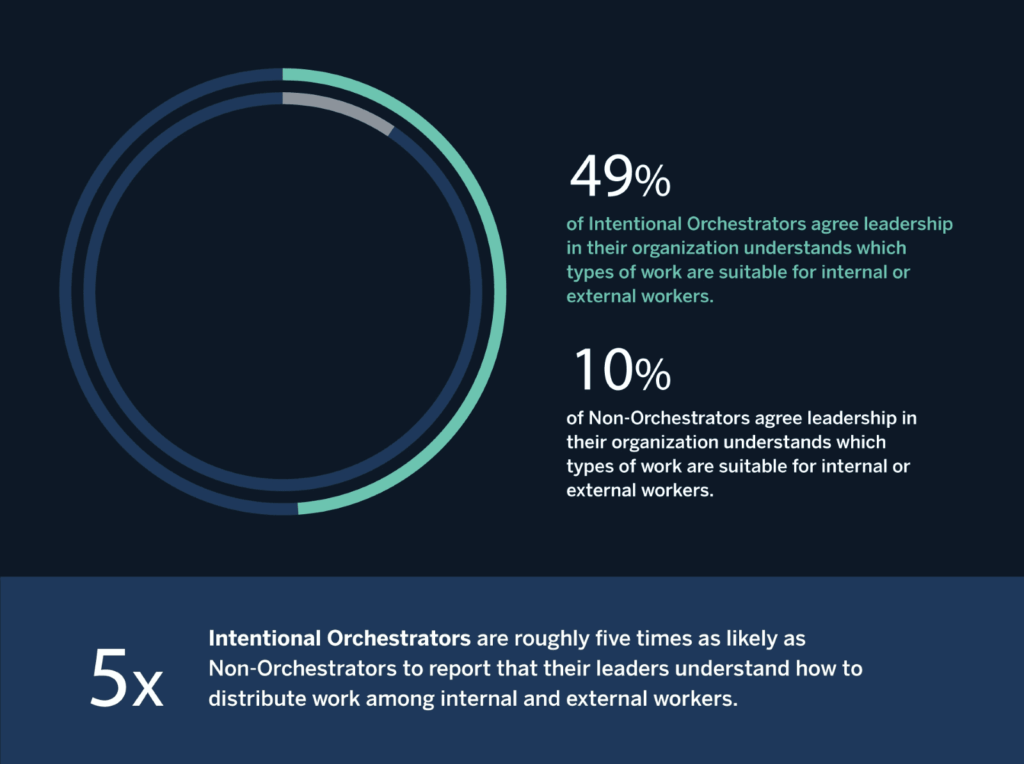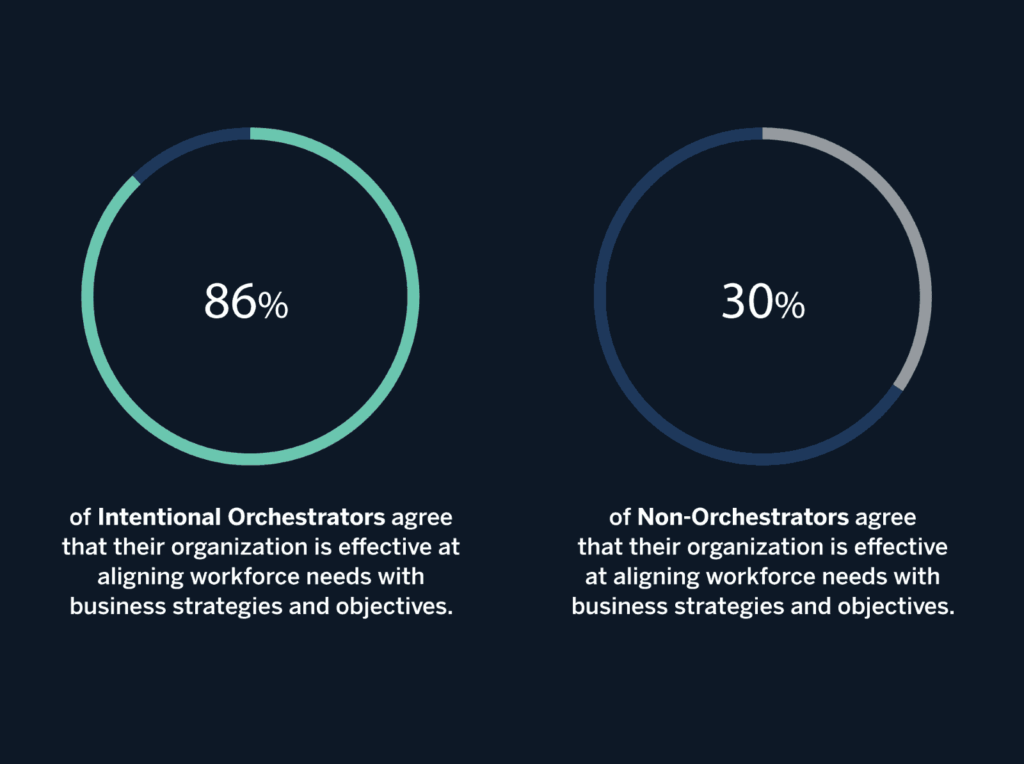Workforce Ecosystem Management

What is Workforce Ecosystem Management?
MIT Sloan Management Review and Deloitte define Workforce Ecosystems as a structure that aligns business and workforce strategies.
Successful leaders are understanding the complexity of these workforce ecosystems and modifying their management techniques to support these new systems, according to this report, as firms increasingly rely on both internal and external contributors.
According to MIT Sloan research, “firms that are organising their workforce ecosystems most consciously share five traits. They are considerably more likely than other businesses to:
- Closely coordinate cross-functional management of internal and external workers.
- Hire and engage the internal and external talent they need.
- Support managers seeking to hire external workers.
- Have leadership that understands how to allocate work for internal and external contributors.
- Align their workforce approach with their business strategy”.
Section 1. “Workforce Ecosystems—A New Reality”
According to MIT Sloan’s global survey, 93% of managers in firms throughout the world include some external workers in their workforce. “Work is done for them by a variety of people both inside and outside the company, including third-party organisations. These contributors are occasionally hired directly by the organisation or hired on a contract basis. They could also be complementors who are not directly employed by the organisation”.
The Workforce Ecosystem structure contains interdependencies and complementarities among members, as well as players from within and outside the organisation collaborating to achieve both individual and communal goals.
Figure 1. Managing More External Workers
While the majority of the respondents consider external contributors to be part of their organisation’s workforce, just around a third are actively planning to manage more of them.
MIT Sloan believes that workforce ecosystem approach builds on legacy management approaches that were designed for (and around) people, but it can also introduce difficulties due to differences in geographic and regulatory environments. Furthermore, Leaders need to adjust their mindsets as well as their behaviors in order to orchestrate a workforce ecosystem, because a mindset shift helps create a flexible organisation.
Organisational Culture in Workforce Ecosystems
Organisations are evaluating the extent to which external contributors can and should be integrated in their culture as their reliance on a variety of external contributors grows. The survey results suggest that many people believe that the solution is to more purposefully integrate those people into the culture. A large majority of the respondents (80%) agree that external workers should be involved in the organisation’s culture.
Diversity, Equity, and Inclusion
Diversity, equity, and inclusion (DEI) efforts can help to capture some of the opportunities and difficulties of worker ecosystems. Only 33% of respondents said they involve external contributors when evaluating the impact of DEI efforts. External contributors make up a considerable and growing percentage of many workforces, but the data point shows that many firms’ DEI estimates may be misleading when seen as a whole.
According to MIT Sloan, “when a varied workforce represents a shrinking percentage of the broader workforce ecosystem, having a diversified workforce becomes less important. When a base of employees represents a shrinking percentage of the broader workforce and unfair treatment (such as pay disparity) persists across the entire workforce ecosystem, having fairness among a base of employees becomes less meaningful”. Now, more leaders are looking into how to implement their company’s values and principles across their whole workforce ecosystem.
Section 2: Confronting the Orchestration Challenge
Intentional Orchestrators— “These businesses regard their workforces as a mix of internal and external contributors, are adopting an integrated approach to managing both internal and external workers, and are planning to manage a future workforce that is increasingly reliant on external workers”.
Figure 3: Intentional Orchestrators Focus on Cross-Functional Coordination
Results show that Intentional Orchestrators are “far more likely to closely coordinate the cross-functional management of their workforce ecosystems”. They are also more likely to recruit and retain the internal and external talent they require.
FIGURE 5: Intentional Orchestrators Support Key Hiring Practices
Intentional Orchestrators are “more likely to support managers hiring external contributors”.
Managers and business units may require new resources, business processes, and technologies to access the personnel they require at scale, particularly in large enterprises. Greater reliance on external workforce and specialised expertise, for example, may necessitate new systems for authenticating or confirming external talent’s credentials (and internal workers as well). Organisations can help managers hire by creating processes that do so.
Figure 6: Intentional Orchestrators Understand How to Allocate Work
Intentional Orchestrators—”have the leadership skills to allocate work among internal and external workers”.
Figure 7: Intentional Orchestrators Align Workforce and Business Strategy
Intentional Orchestrators— “are more likely to align workforce needs with business strategy”.
Stronger organisational alignment is associated with intentionally managing a workforce ecosystem that involves both internal and external actors. When it comes to aligning organisational behaviours with desired strategic goals, “Intentional Orchestrators have the upper hand”, but the benefits aren’t limited to organisational alignment.
In conclusion, the orchestration of worker ecosystems is the task of many corporate functions. To properly manage these interrelated, complex systems, leaders must decide how to arrange linkages among various functions. Some of these tasks, such as procurement and legal, may necessitate extra effort to incorporate into the workforce ecosystem orchestration process. Leading and managing worker ecosystems strategically can help firms accomplish their strategic objectives now and in the future. Managing a worker ecosystem means taking control of your company’s destiny.
It’s becoming evident that coordinating worker ecosystems necessitates new management methods, leadership approaches, and other adjustments. It’s not easy to transition from managing employees to orchestrating a workforce ecosystem.
Need help with making change to adjust to the new workplace? Read the full article here .






